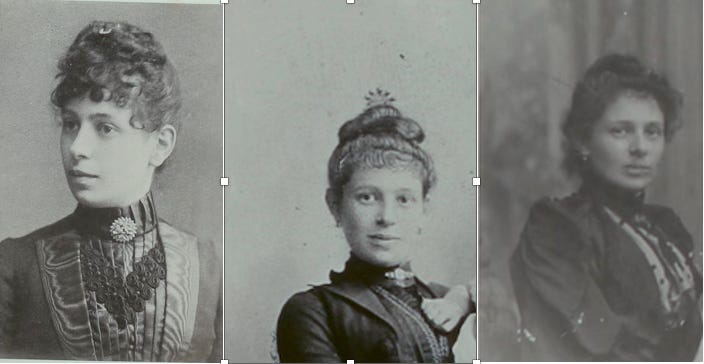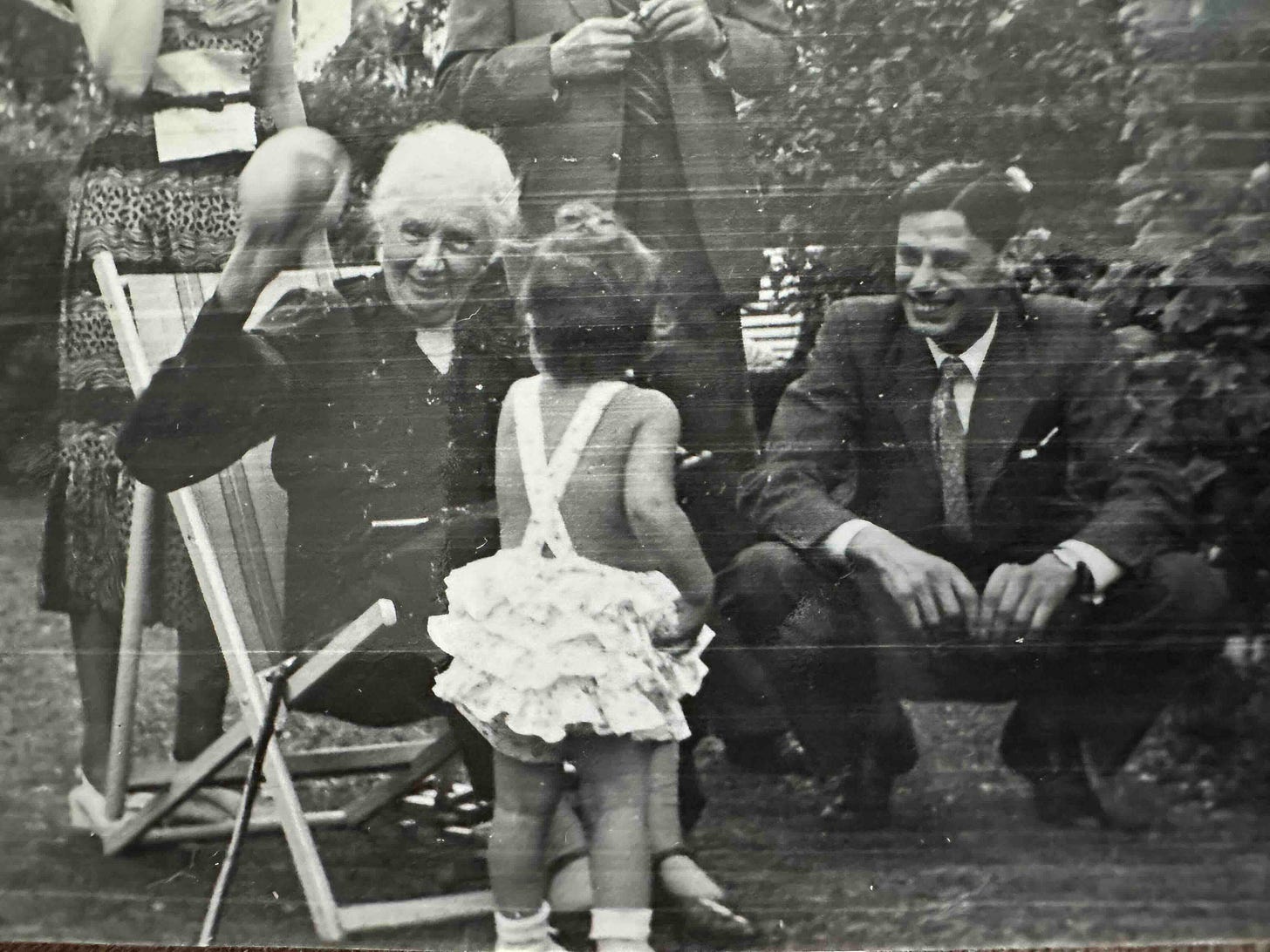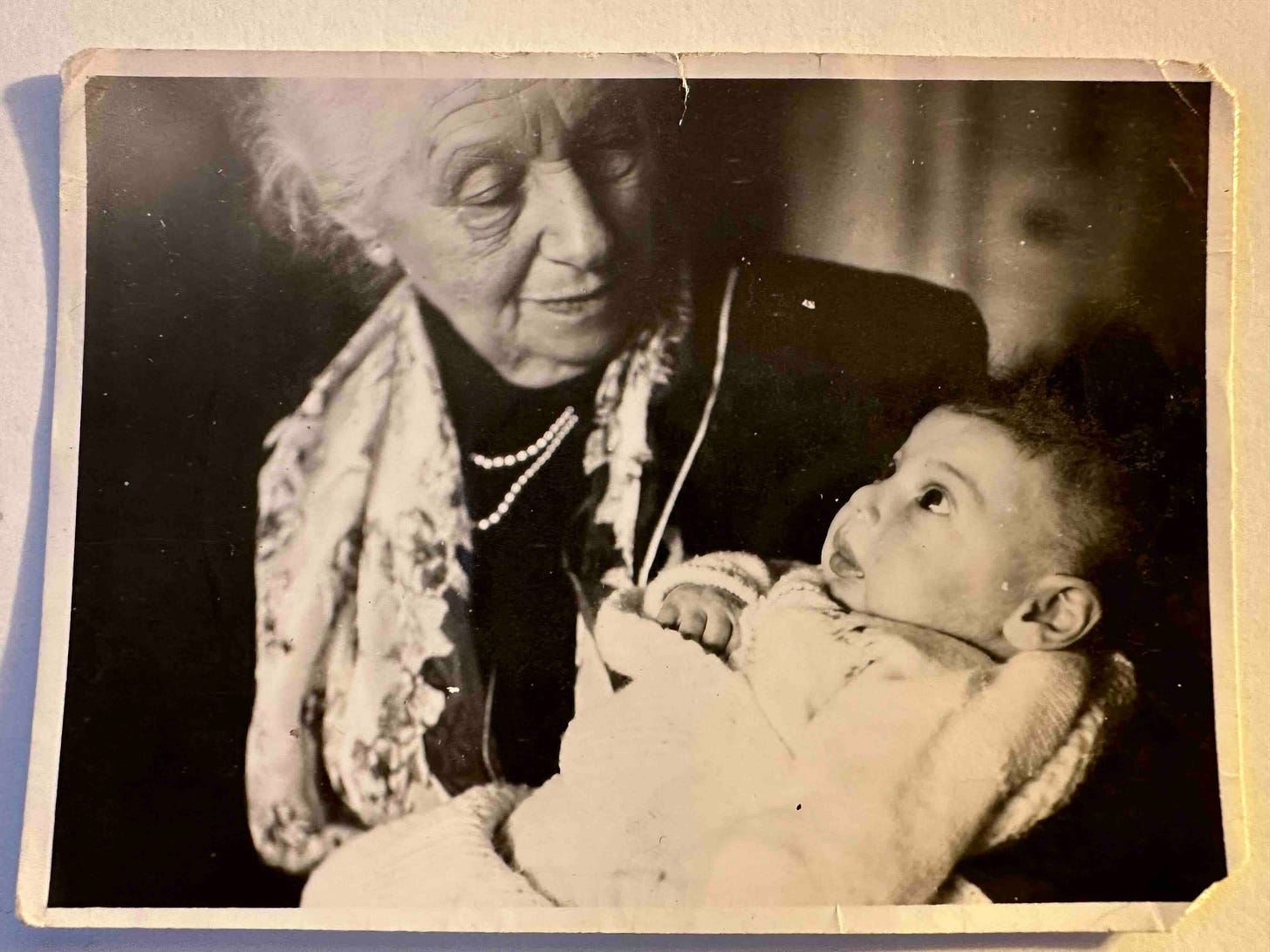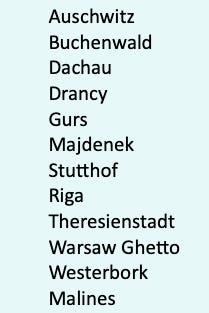I did not know my great-grandmother, Sara Marx. She died in 1950 in London, and I was not born until 1953. I also did not know much about her until many years later, other than that my father adored her.
Sara is my father’s, father’s mum. Here are some pictures of her, from 1883 in her 20s up to the year she died in 1950, playing with my sister Caroline in my grandparents’ garden in northwest London.
The story unfolding is centred around my great-grandmother in a very wide sense. Sara Stern was born into a small Jewish community in a rural village in Franconia, southern Germany, in 1862. Sara had many siblings, but it was just her and three of her sisters who survived into adulthood, each marrying into other families, creating generations of cousins to live (and die) in turbulent times.
My great-grandmother had four children, all boys. They all fought for their country in World War 1. After World War 1, they and their cousins settled into life and were spread across Germany. They witnessed and suffered from the terrible events that unfolded in the 1930s in Germany.
Sara’s Offspring and Cousins
My great-grandmother Sara was trapped in Germany in September 1939. She was one of the few that spent three years in a ghetto camp and survived, at the age of 83. She made it to London where she met two of her great-granddaughters, my cousin Joan, and my sister Caroline.
My work started very narrowly from a file of all the letters and documents my grandfather kept in his struggle to arrange safe and secure passage for his mother from the aftermath of war-torn continental Europe to London so that Sara could be reunited with and surrounded by her loving family.
As I read and researched, I studied more and more of Sara’s family, and my extended family and found their paths crossed at so many points. I could have just dug down into history, discarding the tributaries of stories and families I encountered to keep focussed on Sara. Naturally, there is a bias towards my direct lineage and there is more that I know of, of my own family than of my cousins. I also have an affinity to my grandmother’s family Erna Abraham who married my grandfather Erich Marx, Sara’s eldest son.
However, this would be a disservice to Sara, who she was and the families I came across. Sara’s life is filled with her relationships with her nephews and nieces and their families as much as her own children and grandchildren. Her closeness to her wider family comes precisely from being one of four daughters whose parents had died when they were all in their early twenties.
When putting all of this together, the story becomes larger. It becomes about all the branches of those four sisters and then down through my branch and the families intertwined into them. It makes sense to have Sara in the middle of this as the reference point which is why this is her story. Through her and my family stories, there is a world of Jewish history that is illustrated. To my mind, they provide a sense of all that happened to an entire family.
Some statistics
To give a view of what I mean by a wider story, I count there were 91 direct members of the Stern family members including spouses and offspring, living in continental Europe during the 1930’s. This does not include the connected families of their spouses. As I researched the families, I started to note who survived, who escaped, who hid and who was murdered. If I include those of wider family members, the families of spouses married into the Stern family, I could go on for an awfully long time. I had to bring at least some focus to this task and not stray too far from my and my great-grandmother’s family. Nevertheless, here is a list of the camps where someone in my story ended up, either perishing or escaping or surviving:
This list is not complete as there were many detention and holding centres as well as labour camps that family members were transferred to during their years in the camps. While this seemed a lot to me, the website of the Holocaust Encyclopaedia of the US Holocaust Memorial Museum suggests that the Nazis and their allies had over 44,000 camps including labour camps, detention centres and ghettos. This shows that a family history such as mine does not even scratch the surface of the enormity of what happened. Yet, it is a witness that is real and alive. This is also why I am telling it.
The Wider Picture
Through telling the story about my great-grandmother and all the related families, there is an opportunity to look at what was happening in the world during her life and bring its impact to a personal level. So much of history is anonymous or about particular characters. This story, my family’s story distils these cataclysmic and seismic events affecting millions upon millions of people. It forced people into actions, taken to avoid their own destruction, some or all of which worked and some which clearly did not. These were not helpless people, no more than you or I. Whether by design or by accident, some people were saved, or consider that they saved themselves, and others just were not able to do so. All of this is here in Sara’s family, my family.
My mother’s family
You may at this point wonder at my silence around my mother’s family. That family has been well-documented by my father and is specifically not the subject matter here. This branch of my family comes in way further down the line to have any connection to Sara. My parents met after the war in London, both naturalised British Subjects having been rendered stateless by Germany, their country of birth and whose families had lived there for generations. From time to time, I will bring in my mother’s family, the Kohnstamms, as their story also informs and creates my own and indeed this story but that will be by way of deviation or wandering from the path.
The Blog, Not a Book
In a book, I could have covered the direct story of my great-grandmother, the escape of her children from Germany, and her incarceration and release into her family. But, as I mentioned above, it occurs to me that it would be very narrow, and it would not give me the freedom to go down other avenues. Never having written anything like this before, I feel that a blog gives me a freedom to expand, to experiment, and to dwell in areas worth looking at. Like Sara and her life, it is a journey not written out and the direction is not always defined. I hope you will join me on this journey and see what can be discovered.
Attributions:
Many of the documents and photographs here are, or at some time in the future will be, lodged as a family archive with the Jewish Museum in Berlin. Jüdisches Museum Berlin, Schenkung von Frau Anne Marx in liebevoller Erinnerung an ihren Mann Carl Theodore.









I love all the pictures and can see Sara's strength, kindness and wisdom in her face